Lap dancers: Ford Focus ST Track Pack vs Toyota GR86
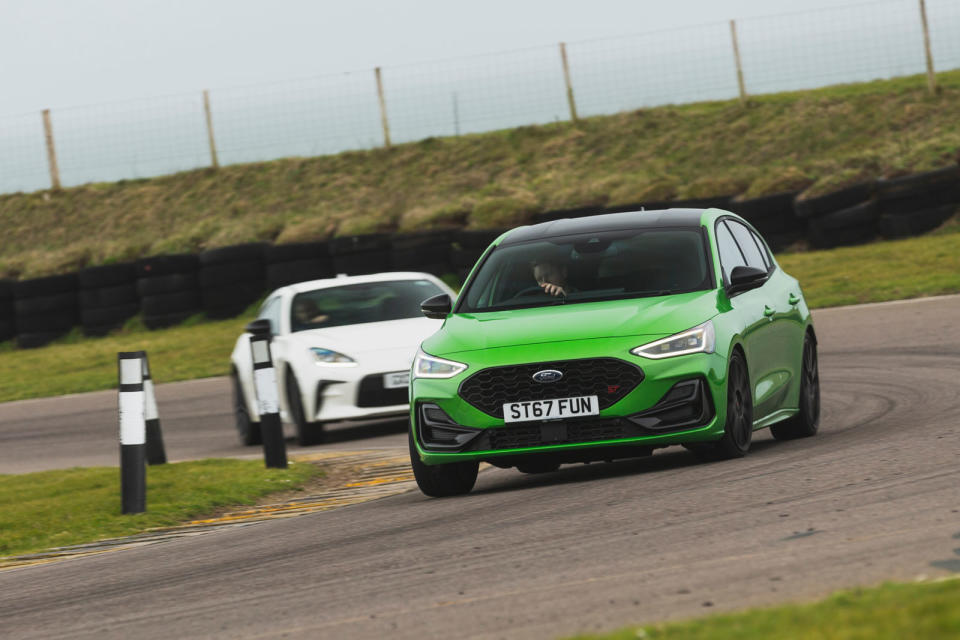
Fun motors are quickly rising in price: the GR86 is more than £30,000, and the Focus ST tips £40k
Second gear, third gear, it doesn’t really matter.
Sometimes I’m wringing every last rev out of the Toyota GR86 on the way out of Anglesey Circuit’s imaginatively named The Hairpin.
Other times I’m dispensing with the time-consuming and chassis-unsettling third-to-second-to-third gearshifts on the way in and out of the 180deg right-hander to see if that makes a difference.
It doesn’t. The result is the same: ahead of me, my colleague Richard Lane in the Ford Focus ST with Track Pack (hence the race track we’re at) comes out of things further along the track than when we went in.
Some of that is the inevitable result of a specific time gap between two objects being a larger distance when they’re travelling faster, as gives the concertina effect when you’re watching racing cars enter and exit corners. But mostly he’s just extending the gap.
This is a circuit (and road) meeting of two cars that do similar things at a specific price point, something car mags have been doing since way before I started reading them.
But even the obvious tests, and I’m not sure this is one, keep bringing up little surprises to me even now.
Ford Focus ST Track Pack vs Toyota GR86: Pricing and specs
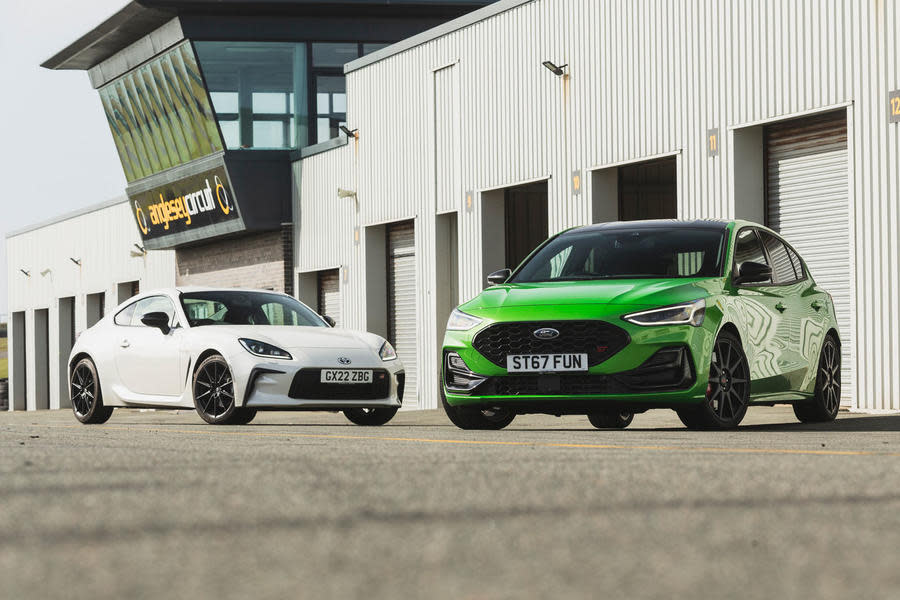
The thing that keeps tweaking my eyebrow upwards these days, but really shouldn’t be by now, is that this is, effectively if not officially, a £40,000 twin test.
The Focus ST Track Pack is actually a £40,000 car, with its near-£37,000 base price for this 276bhp 2.3-litre family-sized five-door hatchback bolstered by another £3000 for the new Track Pack.
Before the Focus’s recent facelift, elements of these mods were sold and known as the ST Edition, a rather limper name that understated a rather serious batch of changes.
Available on only the six-speed manual and hatchback rather than automatic or estate version of the Focus ST, the Track Pack brings 10%-lighter alloy wheels, bespoke Pirelli P Zero Corsa tyres and 10%-larger front brake discs than standard.
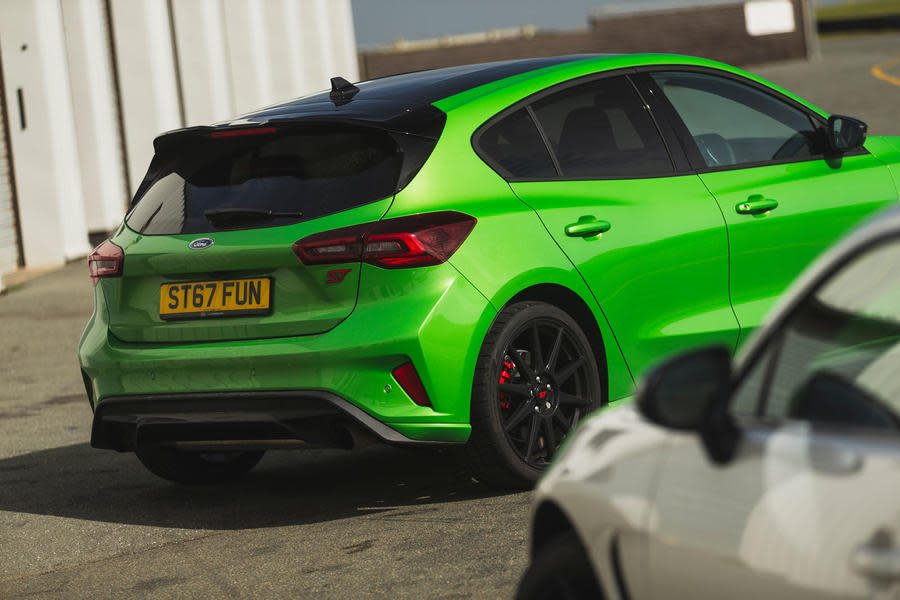
Then, most significantly, it also gets KW Automotive coilovers, which reduce the ride height by 10mm (and provide a drop in centre of gravity) and have adjustable damping settings – 12 stages in compression and 16 stages in rebound – which are accessible if you stick the car on a ramp and/or remove some trim.
With some shiny black plastics where more ordinary ones would normally be, the Track Pack is complete at £40,650, which is almost £5000 more than it was two years ago, when we noted how expensive, at around the mid-£30,000s, the ST had become.
For which you can blame a number of things: inflationary pressures, a shortage of semiconductors, corporate average fuel consumption limits restraining sales volumes, and cheap interest rates and strong residuals meaning none of that mattered so much to the monthly repayment.
Besides, it’s not like it’s as bad as the £50,000- plus of the latest Honda Civic Type R, which lets Ford still claim that it’s the blue-oval, blue-collar, affordable performance car for the working geezer kind of car company.
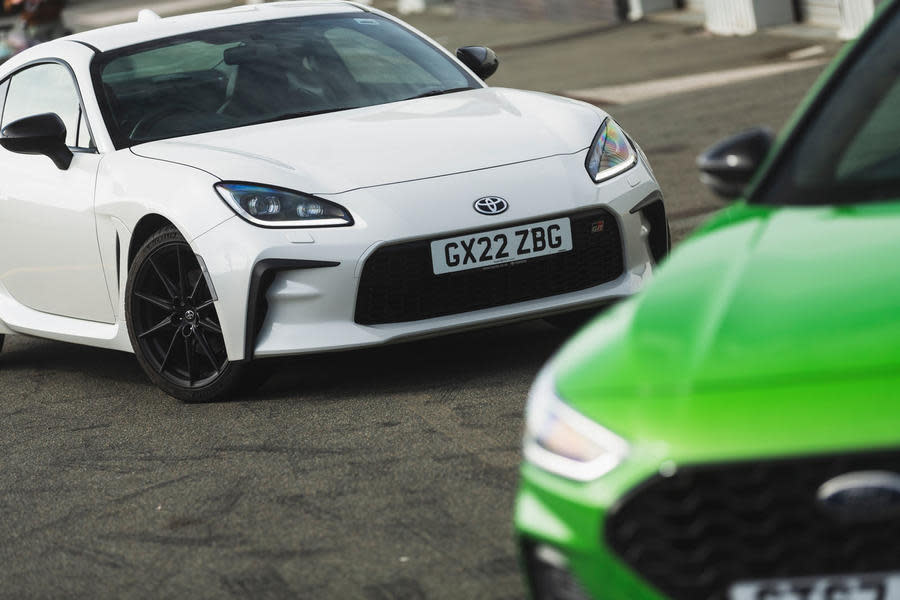
But when it comes to truly restricted supply, welcome to the world of the Toyota GR86 coupé, a car that ought to be magnitudes cheaper than the Ford.
But isn’t necessarily. It was £29,995 for the manual version and £32,085 for the automatic when, on 14 April 2022, Toyota announced prices and specifications then, about an hour and a half later, found that the entire two-year allocation was spoken for.
Two years is all the time that the ’86 can be sold for, before it no longer complies with impending active safety regulations (of the sort that make cars more of a nuisance to drive, for an unproven amount of benefit).
There was a sense Toyota had underplayed the pricing – and people, being people, have done what they do in those cases.
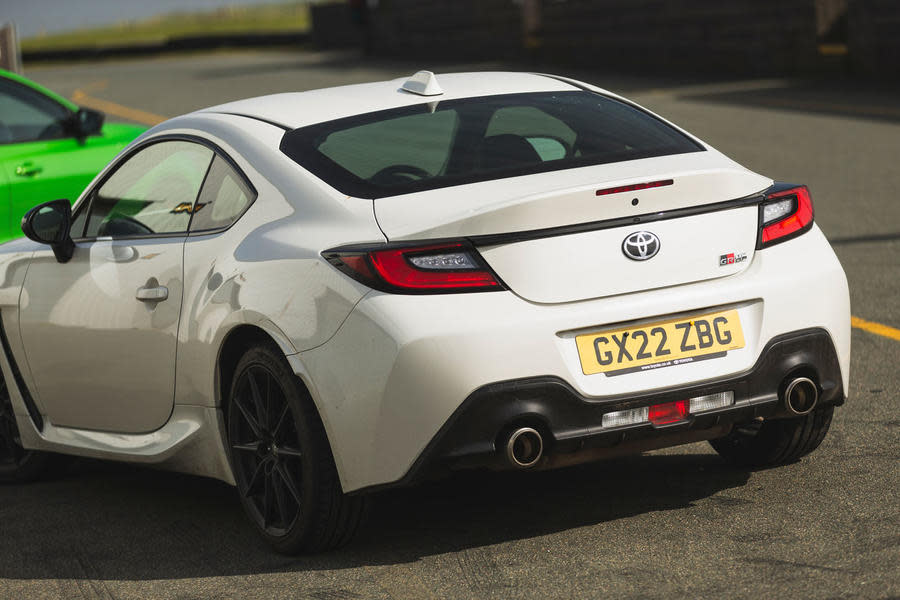
Flippers, they call them – and it isn’t affectionate – buy a car, or a watch or whatever, then advertise it immediately for more than they paid for it.
At the time of our test, there were three such GR86s in the classifieds with delivery miles at nearly £40,000, and one that someone at least had the decency to enjoy for 2000 miles before posting it at £37,000, which of the four is the one I’d buy on the principle that I might like its owner a smidgeon more.
Congratulations to the other lads: you can now afford a new kitchen, but you didn’t actually drive a GR86. Cost of everything, value of nothing etc.
Values relaxed somewhat after the UK got an extra stock allocation, but they're still well above the launch price, at around £34,000.
Ford Focus ST Track Pack vs Toyota GR86: Performance
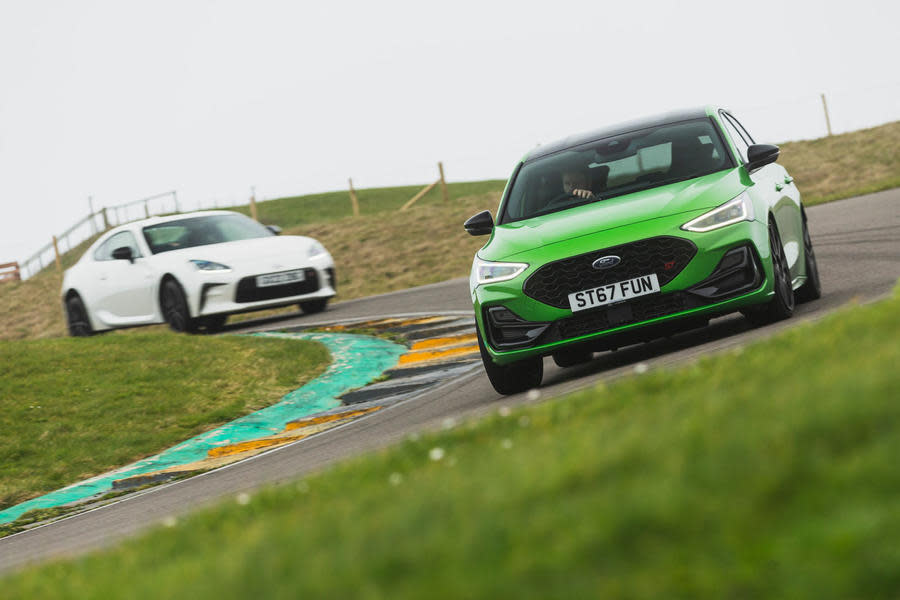
Anyway, I hoped they’d be closer matched in speed than it turns out.
My thinking was that although the Focus makes more power, at 276bhp, it’s also heavier, at 1437kg, so its 192bhp per tonne might give the Toyota a chance.
The GR86’s 2.4-litre naturally aspirated flat-four engine makes 231bhp, but because it weighs only 1276kg, it has 181bhp per tonne.
A tad less, granted, but it has a smaller frontal area and is rear-wheel drive, and therefore its front wheels have less to worry about, so I wondered if that might make the difference. It doesn’t.
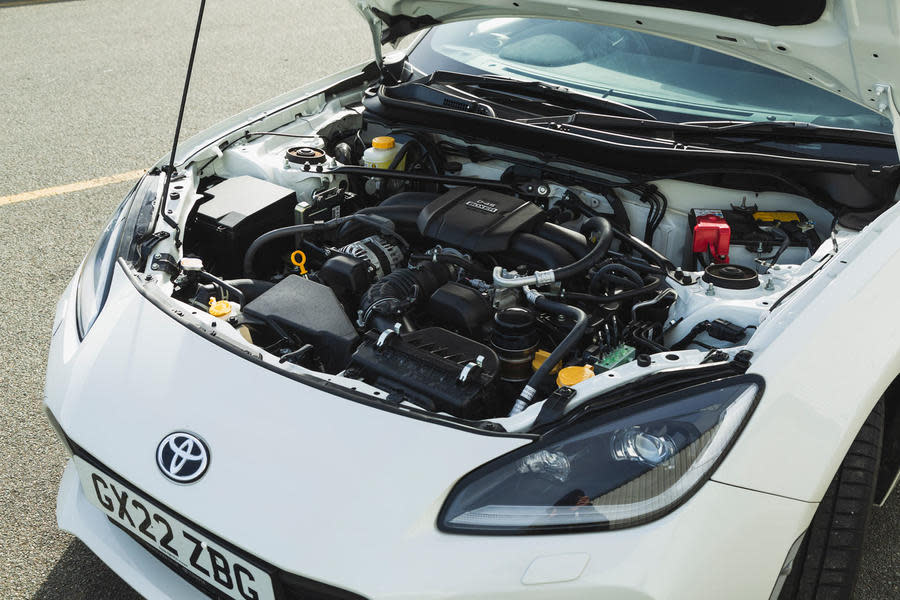
Away from the shenanigans where I’m chasing Richard for our video footage, I set a lap time in both for consistency, where in greasy conditions the GR86 laps Anglesey in 1min 52.5sec and the Focus ST in 1min 50.3sec.
One can argue about how much that, or the respective 0-62mph times of 6.3sec (Toyota) and 5.7sec (Ford) matter.
To me, not at all. But they’re a useful barometer of performance, and a telling by-product of how these cars go about creating it.
The Ford’s 2.3 engine is turbocharged and long of stroke, at 94mm (bore 87.5mm), so it makes a lot of torque, 310lb ft, and it makes it early, from 3000rpm. Peak power is with you by 5500rpm.
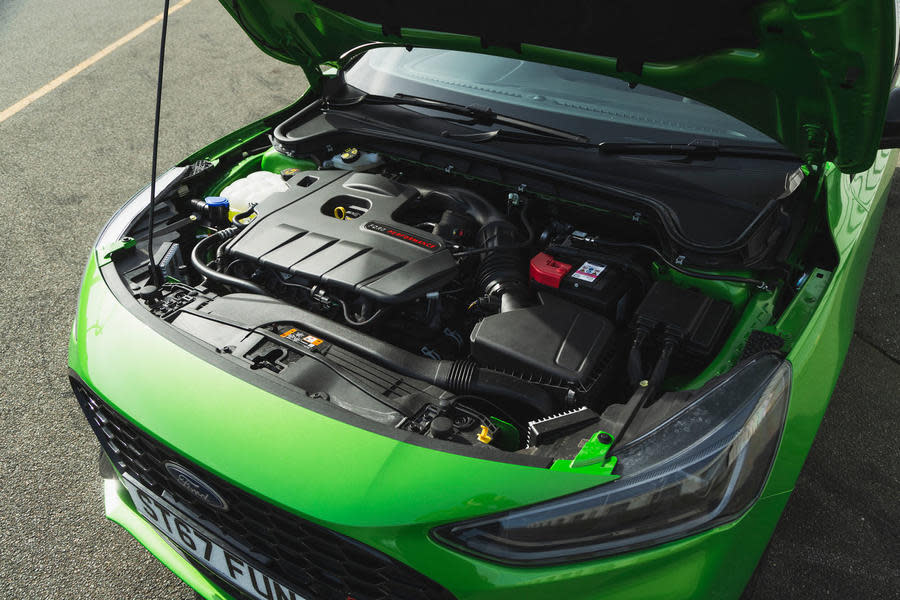
Throw in the 235/35 R19 performance-oriented tyres, and an electronically controlled differential and you get a car, almost regardless of how deftly it’s set up, that gets going quickly and effortlessly.
And Ford, let’s remember, knows how to set up a car.
They’re very proud of the ‘tuck’ that Ford hatches display on the way in to a corner if the driver lifts the throttle or trails the brakes towards an apex.
It’s one of the consistent driving delights at the cheaper end of the car market, finding a car that will rotate and dart around like a great Ford hot hatchback does.
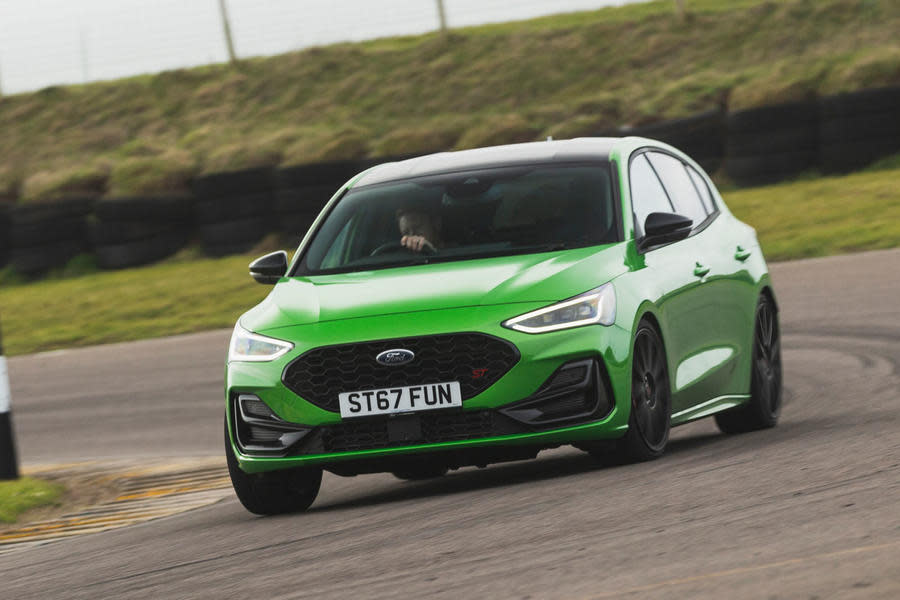
With very quick and reactive steering too, the latest Focus ST verges on a caricatured version of earlier Fiestas and Focuses in this respect. It’s heavier than those so it tries harder.
It feels up on tiptoes, very tightly damped, hopping from one foot to another, and then whooshing and bwoaping (it’s a word, sue me) on corner exit, finding bags of traction, tweaking the steering wheel in excitement and leaving the driver wondering why that Toyota in the mirror is much, much smaller than just a few seconds ago.
We take it that the Civic Type R, which couldn’t be here for this test, is the king hot hatch these days, all so serious and ‘Porsche GT3 on a budget’ as it is.
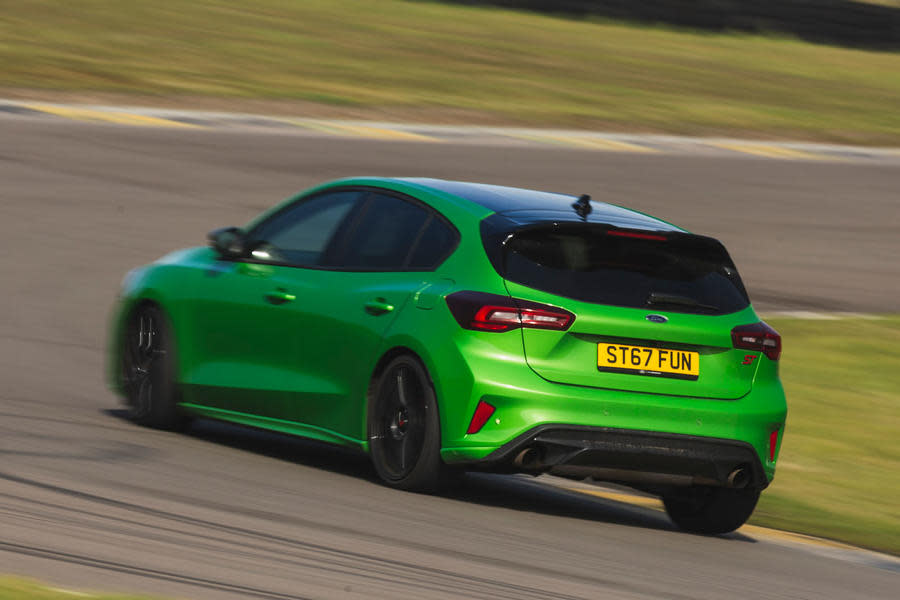
But the hyperactive nature of the Ford hides an exceptionally capable car too.
The Toyota’s engine has no turbo and its bore and stroke are almost swapped from the Ford: it has only an 86mm stroke (96mm bore) so it’s higher revving, and notably less torquey.
If 45bhp wasn’t much disparity given the weight difference, you’ll need 7000rpm applied to get to it, and its 184lb ft – a 126lb ft deficit – isn’t developed until at 3700rpm.
And all of that gets to the road, via a limited-slip differential, through 215/40 R18 tyres. Even though they’re relatively serious Michelin Pilot Sport 4s rather than the Primacys of the earlier Toyota GT86, we are talking a different kind of performance.
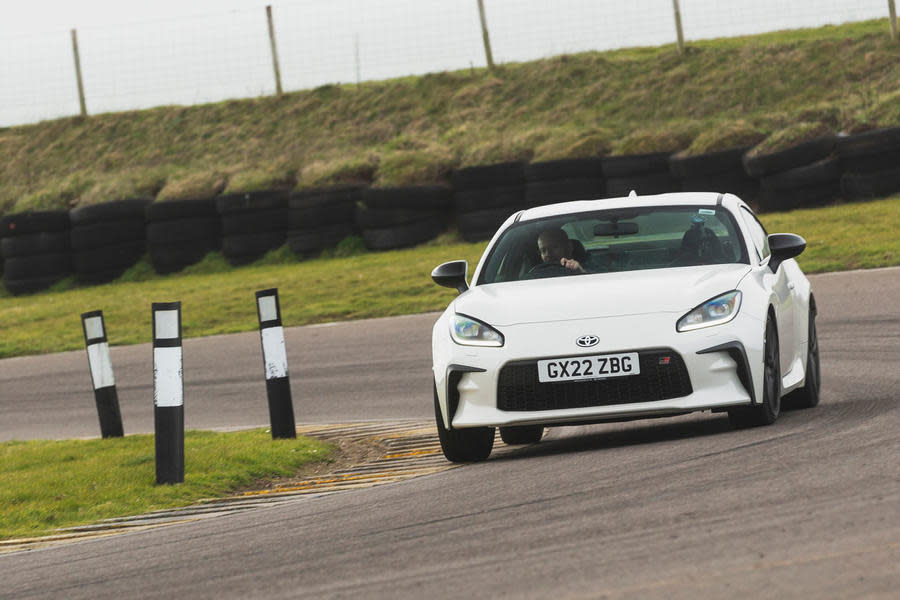
And that’s fine. That the Toyota comes within two seconds of the Ford over a long damp circuit is creditable when you look at the reasons why, and it shows their differences in approach.
If Toyota wanted to make a car quick, it wouldn’t have chosen those specs. Instead, it wanted to make a car that was precise, balanced, honed and enjoyable, and a bit quick on the side. And it has.
The GR86 steers with similar speed yet less aggression than the Focus but, being both lower and lighter, it doesn’t need that to generate similar responses.
It still turns in engagingly and willingly, while a little trail braking helps to settle the nose and unsettle the rear.
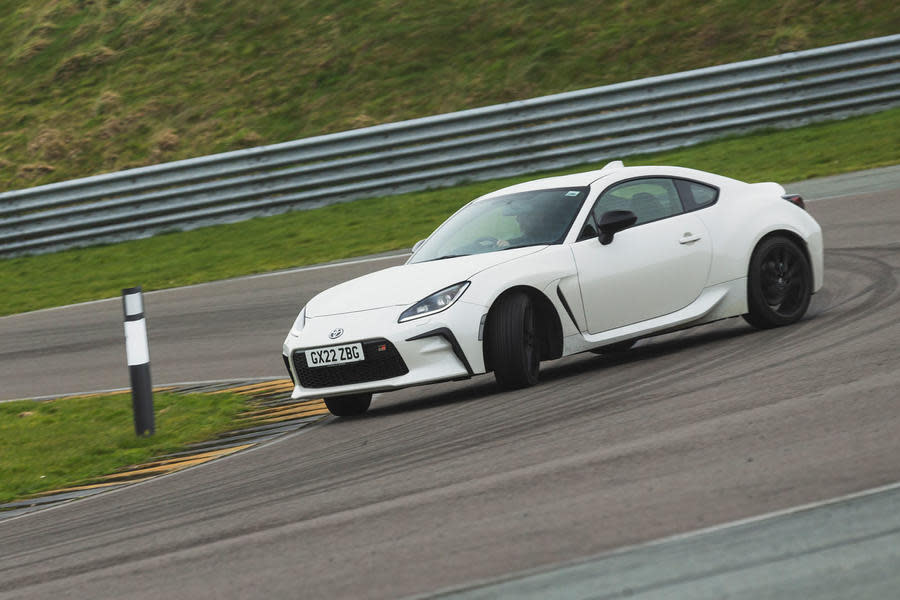
There isn’t the power to slide the car around or throttle steer it like, say, in a BMW M car, but even in faster bends, with revs applied there’s enough oomph to adjust its line, keep it neutral, or push through to a balanced slide that’s easy to initiate and then control.
So Richard is going quicker but we’re both enjoying ourselves. But fundamentally, and I think we both know it, he’s not having any more fun.
The Focus ST is a brilliant hot hatchback. The GR86 is a brilliant sports car.
Toyota GR86 vs Ford Focus ST Track Pack: On the road
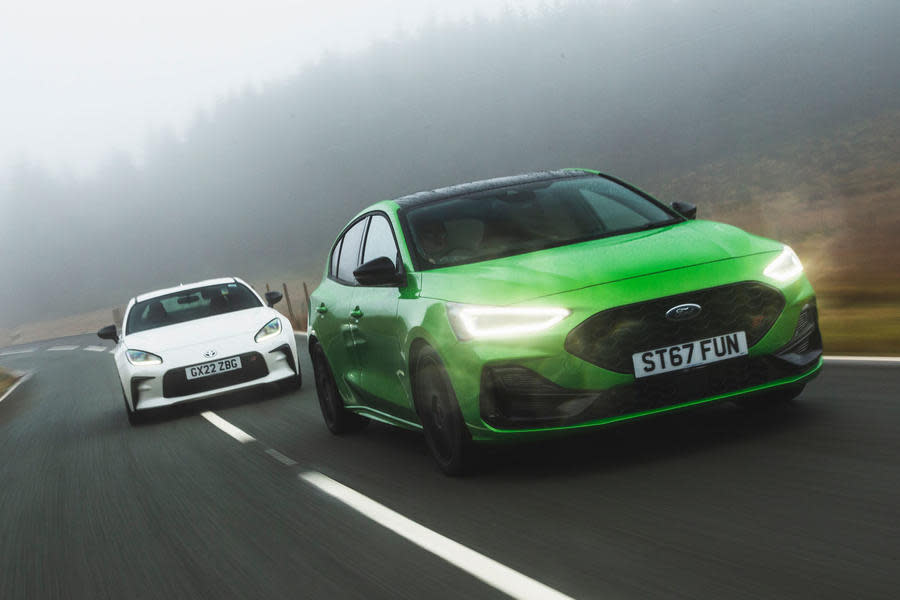
What relevance does the on-limit-behaviour track action have to the road? More than I’d have imagined.
The physics are the physics, after all – so these cars do similar things on road to on track, but at levels restrained by speed limits, visibility limits and common sense.
Both cars have tight body control, with the Focus’s new suspension allowing more road noise and some inputs back into the cabin in a manner I don’t remember in the standard Focus ST, but as a predominantly road driver, don’t be alarmed by the Track Pack moniker.
The ST deals with the worst surfaces that the UK has to throw at it rather well, without resorting to crashing and banging its way down the road while it reins in body movements.

The Toyota’s a noisy car anyway, so although it feels, to me, more absorbent, that doesn’t translate directly to being more refined.
Still, with less body mass to control, it doesn’t need such tight damping, and I suspect its rubber is more pliant, plus the driveline is less aggressive, so I find it a relaxing road car – more so than the Ford – yet still engaging.
The balance and precision are more muted on a road than a track but, with feedback felt through fingertips rather than arms, it’s still just lovely.
Winner – Toyota GR86
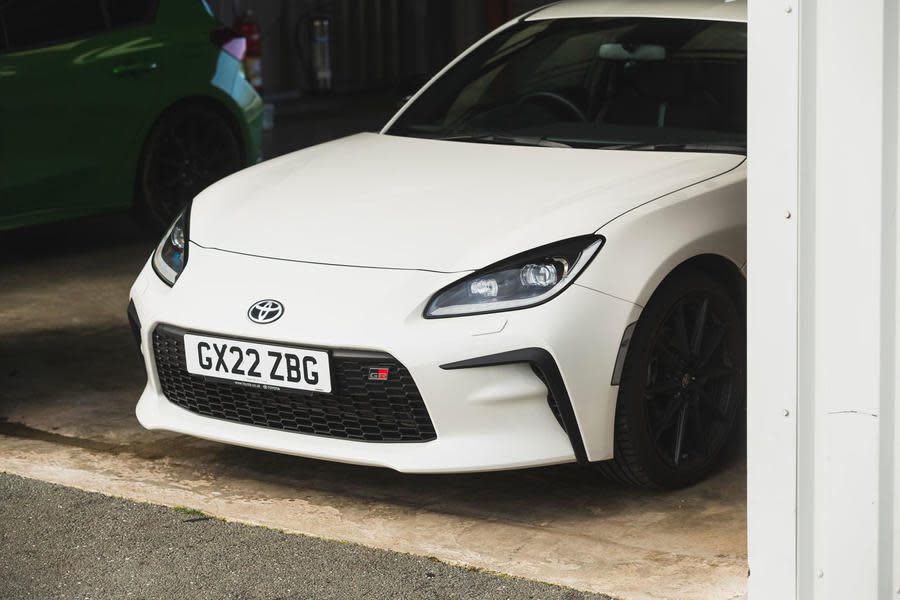
More fluid, precise and ultimately engaging than the Focus ST, even if it is slower around a circuit. Just more fun, more often. And just as endangered.
Second – Ford Focus ST Track Pack
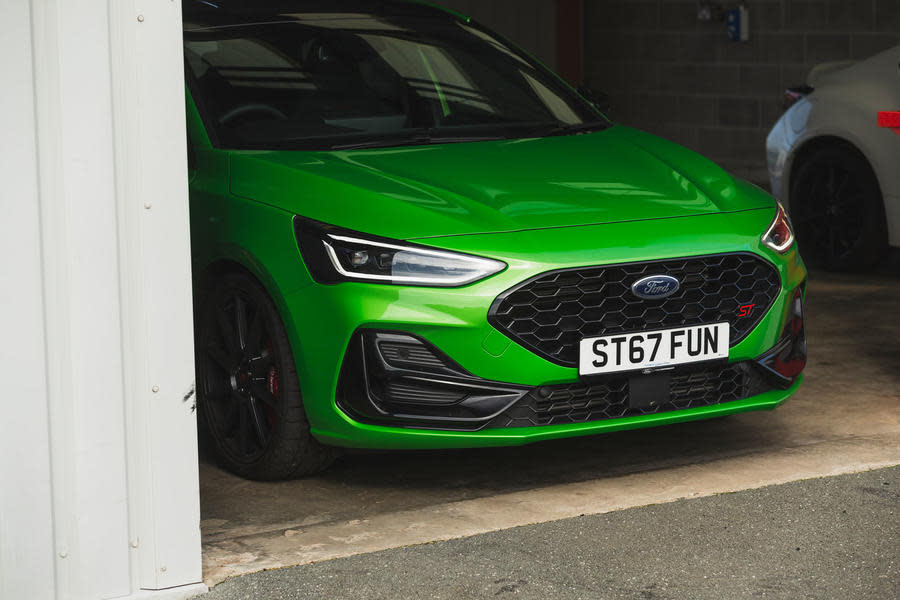
Track Pack brings a level of composure and serious track ability to the Focus ST to join its celebratory agility and enthusiasm. Easy to like and recommend.
]]>

 Yahoo Autos
Yahoo Autos 